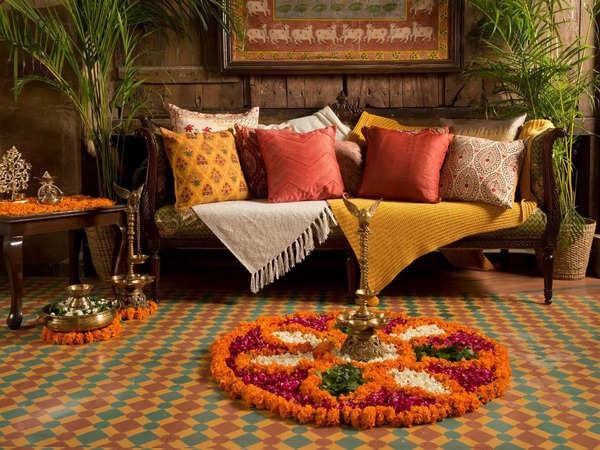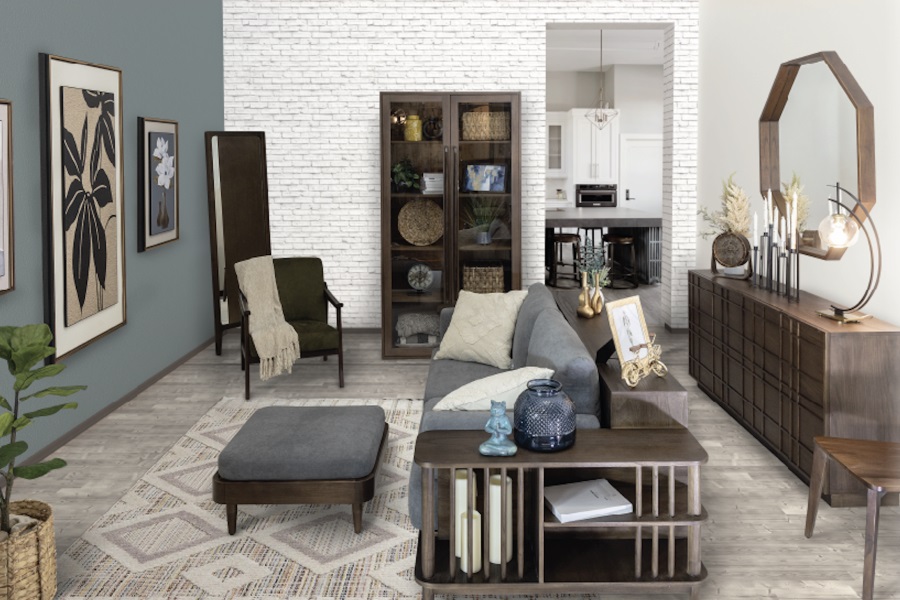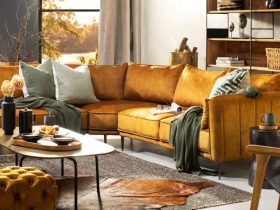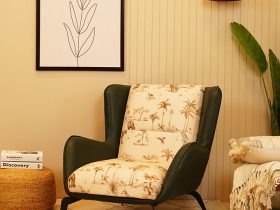Mixing patterns in interior design is an art form that can transform any space from bland to visually stimulating. It involves combining various patterns, textures, and colors to create a cohesive and dynamic look. Whether you are a novice or an experienced decorator, understanding the principles of pattern mixing can help you achieve a stylish and harmonious interior. Here’s a comprehensive guide on how to master the art of mixing patterns in your home.

- Start with a Base Pattern
The foundation of successful pattern mixing is choosing a base pattern that will anchor your design. This pattern should be the most prominent in the room and set the tone for the rest of the space.
Choosing a Base Pattern
- Large-Scale Patterns: Opt for a large-scale pattern for your base, such as a bold floral or geometric design. This will serve as the focal point of the room.
- Color Coordination: Ensure the base pattern includes colors that you plan to use throughout the space. This will help tie all the elements together.
Benefits
- Provides a Focal Point: A base pattern draws the eye and serves as the main attraction in the room.
- Sets the Tone: It helps establish the color scheme and overall aesthetic.
- Mix Patterns of Different Scales
To create a balanced and visually appealing space, mix patterns of different scales. Combining large, medium, and small-scale patterns prevents the design from becoming too chaotic or monotonous.
Tips for Mixing Scales
- Large Patterns: Use large patterns for significant pieces like rugs, curtains, or feature walls.
- Medium Patterns: Incorporate medium-scale patterns in items like throw pillows, bedding, or accent chairs.
- Small Patterns: Utilize small-scale patterns in accessories such as cushions, lampshades, or artwork.
Benefits
- Adds Depth: Different scales create layers and depth, making the space more interesting.
- Prevents Overwhelm: Mixing scales ensures that no single pattern overwhelms the room.
- Stick to a Cohesive Color Palette
A cohesive color palette is crucial for successful pattern mixing. Choose patterns that share a common color or complementary colors to create a harmonious look.
Creating a Color Palette
- Primary Colors: Select one or two primary colors that will dominate the space.
- Accent Colors: Choose a few accent colors that complement the primary colors and add variety.
Benefits
- Ensures Harmony: A cohesive color palette ties all the patterns together, creating a unified look.
- Adds Visual Interest: Complementary colors add depth and interest without clashing.
- Blend Different Pattern Families
Mixing different types of patterns, such as florals, geometrics, stripes, and abstracts, can add variety and excitement to your design.
Pattern Families to Consider
- Florals: Add a touch of nature and softness.
- Geometrics: Provide structure and modernity.
- Stripes: Offer a classic and timeless appeal.
- Abstracts: Introduce an artistic and contemporary feel.
Benefits
- Adds Variety: Different pattern families bring diverse visual elements to the space.
- Creates Balance: Blending various patterns ensures a balanced and dynamic design.
- Use Solids to Ground the Design
Incorporating solid colors is essential to balance the busy patterns and give the eye a place to rest. Solids can be used in larger pieces of furniture, walls, or flooring.
Tips for Using Solids
- Neutral Solids: Use neutral colors like white, beige, or gray to ground the design.
- Bold Solids: Incorporate bold solid colors to create striking contrasts and focal points.
Benefits
- Provides Balance: Solids help balance the patterns and prevent the design from becoming overwhelming.
- Enhances Patterns: They highlight and enhance the patterns by providing a contrasting backdrop.
- Experiment and Edit
The key to mastering pattern mixing is experimentation. Don’t be afraid to try different combinations and see what works best for your space. Editing is also crucial; sometimes, less is more.
Steps to Experiment and Edit
- Swatch Testing: Place fabric swatches or pattern samples together to see how they interact.
- Move Elements Around: Rearrange patterns and see how different placements affect the overall look.
- Step Back: Take a step back and assess the design from a distance to ensure it feels balanced and cohesive.
Benefits
- Encourages Creativity: Experimentation allows you to explore different design possibilities.
- Ensures Cohesion: Editing helps refine the design and ensure all elements work together harmoniously.
Conclusion
Mixing patterns is an art that can transform your space into a visually stimulating and cohesive environment. By starting with a base pattern, mixing different scales, sticking to a cohesive color palette, blending various pattern families, using solids to ground the design, and experimenting with different combinations, you can master the art of pattern mixing. Embrace your creativity and have fun with the process to create a space that reflects your unique style and personality.






